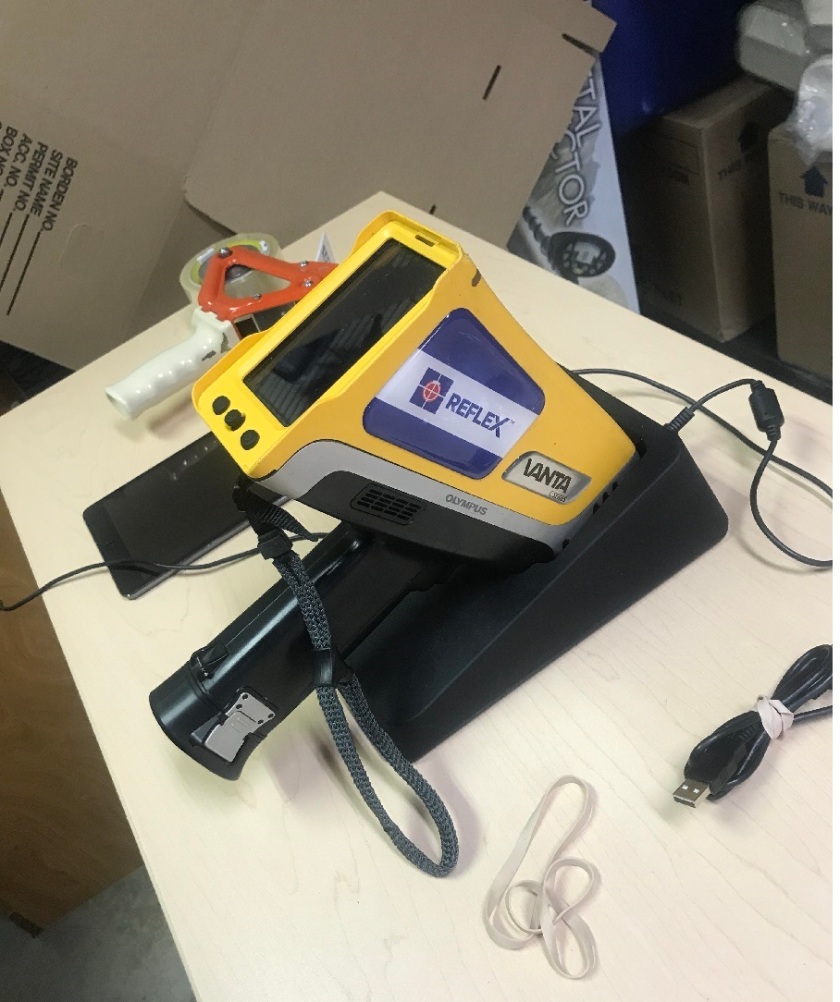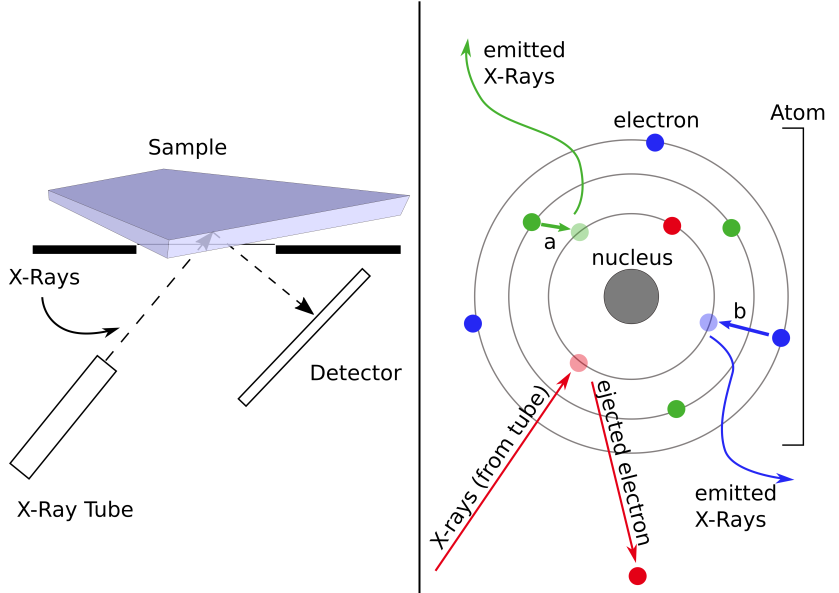“Sourcing” is the study of associating artifacts with their geologic origin in order to infer human transport of materials. This field of research has revealed networks of trade and exchange among indigenous peoples in pre-contact times. But how do researchers figure out the actual source?
One method is with Portable X-Ray Fluorescence (pXRF) analysis. These instruments are used by geologists, archaeologists, and other specialists to gather chemical data of materials in a non-destructive manner. When the results are compared to known sample locations, archaeologists can infer how far the material an artifact was made from has traveled from its geological source. Take obsidian, for example. Obsidian has been found at archaeological sites thousands of kilometers from any volcano. Since there are several volcanoes in North America, identifying which artifact comes from which source affects the interpretation of trade networks.

The analyzers themselves are a very intricate piece of technology that use radiation to gather chemical data of samples. The two main components are the X-Ray tube and the detector. Radiation is emitted down the X-Ray tube towards the sample object and interacts with its surface atoms. This interaction consists of radiation knocking an electron from the atom out of place, creating a vacancy in the electron cloud. This vacancy is filled by other electrons in the atom. The electrons shed energy in the form of X-Rays as they fill that vacancy, which is emitted out and collected by the detector.
The spacing between the orbital shells of electrons in the atom is unique to that element. An atom of potassium for instance, has different spacing between the electron shells than gold or iron. So, when an electron fills the vacancy and emits X-Rays, the emitted X-Rays are equivalent to the distance that is unique to that element. The detector collects these x-rays which are diagnostic of the elements present in the sample. Internal software then calibrates the readings into proportions of all elements in the sample.

pXRF analyzers are useful tools for archaeologists since we study culturally significant objects, and do not want to alter or destroy the artifacts we wish to analyze. They are also relatively easy to use. Although users require a certification, they are safe when operated correctly, and the data can be downloaded and interpreted quickly.
A recent study of 750 obsidian artifacts has showed that indigenous trading networks spanned thousands of kilometers. Archaeological sites in Alberta contain obsidian which originated from north, central, and coastal British Columbia, Wyoming, Idaho, and Oregon, spanning a trade network almost 2,000 km across.

